When the Brussels-based photographer David Denil sleepwalks through the streets of Kiev in Ukraine, it’s not so much to examine the war as its psychological effects. Rather than to document the daily lives of the inhabitants, he produces magical and powerful stories with them about the past and about the future that lies ahead.
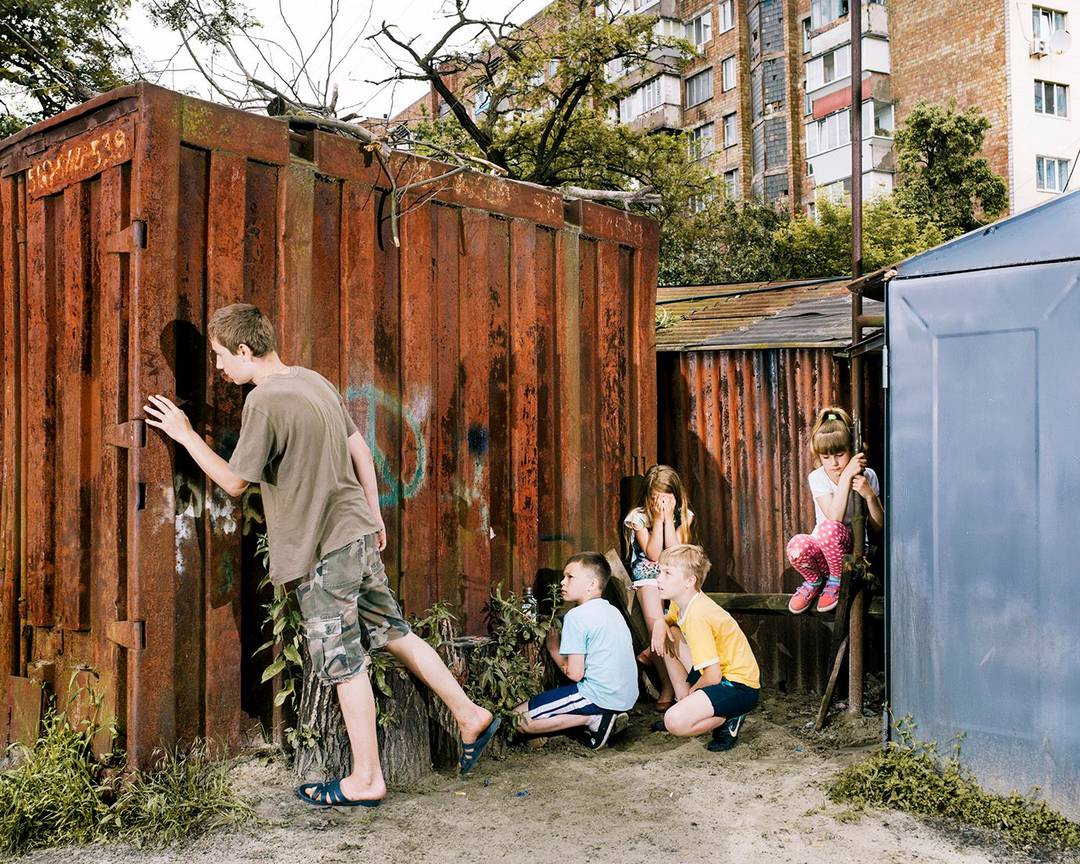
David Denil’s photographs are often filmic tableaux vivants with a slightly surrealist atmosphere
David Denil: Sleepwalking through Kiev
"I’m not so interested in photography myself,” says David Denil. “I am more interested in the ideas that are explored before taking the picture.” In 2017, having just graduated from KASK (Ghent), he took a trip through eastern Europe, stopping off in Kiev, a capital city in transition and the site, in 2013 and 2014, of violent protests and clashes triggered by President Viktor Yanukovych’s refusal to sign the Association Agreement between Ukraine and the European Union.
1991
“I understood there were a lot of psychological issues; people were not only talking about the war, they were mainly talking about the situation of the country itself, about the past and the future,” says Denil.
“Ukraine became independent in 1991, which is quite recent. People are still concerned with issues about how to move on.” In the course of discussions and encounters, the artist’s first project and book of photography began to take shape: Let Us Not Fall Asleep While Walking. The dreamlike title is borrowed from the Romantic poet, painter, and humanist from Kiev, Taras Shevchenko (“His spirit is still very strongly alive in the country.”)
Determined not to create work about the Ukrainian people but rather with them, Denil rejected the traditional documentary approach from the start, aiming for something between fiction and storytelling. “To me, if it exists, straightforward reality tells less. Fiction can elevate your work to something more understandable.”
"I focus on what comes from the people themselves"
Impalpable realities
Profoundly inspired by painting and film (“my main interests”), he spent fifty days wandering the streets of Kiev meeting the individuals who would become the characters in his allegorical and otherworldly pictures. “I never introduced myself as a photographer – otherwise, photography becomes the subject. It was only later that I talked about my intentions and made suggestions.”
When a group of children were playing hide-and-seek, the photographer approached them and asked them to pretend to hide, not from a friend, but from a stranger whom they didn’t know. The mystery and fear conveyed by the scene are suggestive of the vast and often impalpable concept of impending war, “something we fear because we don’t know exactly what’s going to happen to us.”
Freeze-frame
When Denil came across a dog that was torn between the commands of his young master and those of his trainer, the photographer immediately saw a political metaphor in the scene. “I was thinking that the dog represented the people having to choose between the candies waved by the two men who represented different political choices.”
“Most of the time, the idea comes very quickly,” says Denil. “I start by finding an interesting frame, and then people tell things and, as a playwright, I see stories happening within a scene. I then try to trigger the emotion that could come from the image. The suggestions I make are not so much physical. I want the people themselves to understand how they have to behave.” All these “freeze-frames” suggest a complete story, with a before and an after, like in a film.
In these tableaux vivants with a slightly surrealist atmosphere – which subtly subvert the socialist realist aesthetic, “Lenin or Stalin are no longer the central figures; the people are” – the deceptively calm daily lives of the inhabitants of Kiev appear strange and unsettling.
Kubrick & Arbus
Could the city, criss-crossed by walls and fences, be under surveillance? An intense white light sears the images, threatening to make them disappear at any moment, like a nightmare created by Stanley Kubrick or Diane Arbus, which vanishes when you wake up. Let us not fall asleep while walking. What if that intense light was instead a signal of love and hope?
The symbol of a shining future embodied by a couple with a bouquet of flowers or some smiling teenagers in selfie-mode. And what if Ukraine was not this complex territory in transition made up of parallel realities in which the past coexists with the future, the relics of communism with the expansion of capitalism, trauma with hope, and in which contradicting truths exist side-by-side without colliding?
Blending time
In a post-truth era in which the notion of authenticity has lost all meaning (see Margins of Excess, the recent work by the Brussels photographer Max Pinckers), David Denil chooses to “focus on what comes from the people themselves.” In the book accompanying his project, Denil includes screenshots of amateur videos on YouTube spreading fake news about the war in the Ukraine, press cuttings containing valuable accounts, and collages of family photographs of victims who died in combat.
“I was exploring how I could bring together the atmosphere of the Euromaidan protests and the stories of the people living in Kiev today, to blend time.” The book also features allegorical paintings and hard-hitting articles, including one by the journalist Sébastien Gobert about the difficult de-communisation of Ukraine and a paper on the issue of post-traumatic stress in Ukrainian veterans, written by the English reporter Jack Losh.
Hybrid but Strong
The result is a dense, hybrid collection with a strong narrative, in which everyone is encouraged to find their own truth and mythologies in it and to project their own emotions onto it. “This work is also about my inner conflicts. I chose to study photography because I wanted to explore something that comes more from myself,” says the forty-year-old artist who worked as an engineer for Proximus and Siemens before making the move to film and photography.
“My grandmother was the only one with an artistic sensibility in my family. When she died, I decided to quit my job and go study in Ghent,” says Denil. “I think that if she was still alive, she would be proud of me now.”
Read more about: Brussel , Expo , david denil , tentoonstelling , fotografie , Recyclart
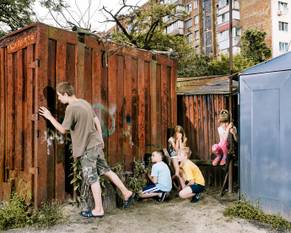
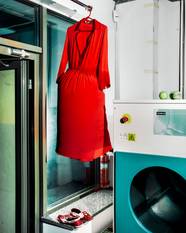
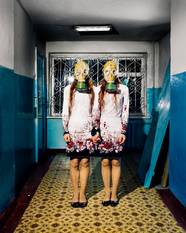
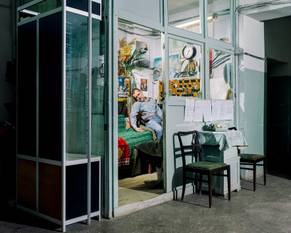
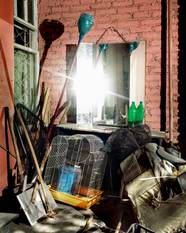
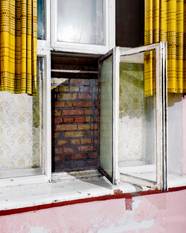




Fijn dat je wil reageren. Wie reageert, gaat akkoord met onze huisregels. Hoe reageren via Disqus? Een woordje uitleg.